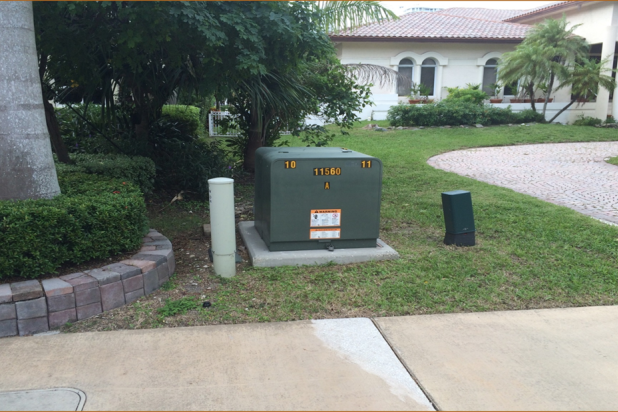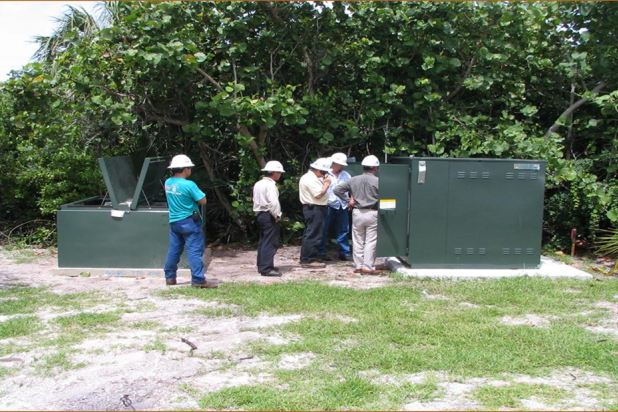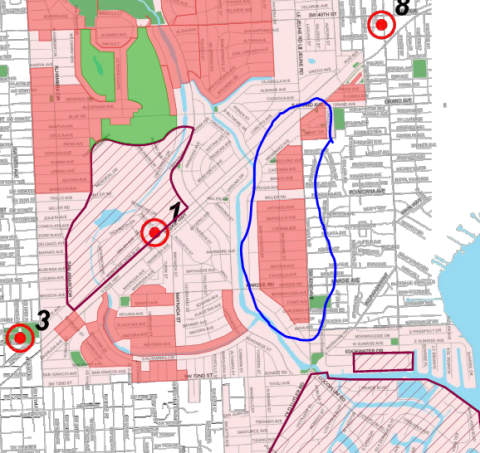How will my electric service improve when it is converted from overhead to underground?
FPL estimates that underground power lines perform 50% better than overhead power lines day-to-day and 85% better during severe weather conditions, such as hurricanes and tropical storms. In addition, according to FPL, the hardening program of main feeder lines already in progress is improving service reliability, and shortening the frequency and duration of outages considerably.
Who will communicate with me about the project planned for my neighborhood?
FPL is fully managing the planning, engineering, construction and communication efforts for each neighborhood and with individual property owners. The utility plans its work well in advance, with engineering design and easement issues often addressed a year or so before actual work is performed to convert a neighborhood from overhead to underground electrical service. FPL has already started some neighborhood outreach and written communications to customers in neighborhoods that are planned for the near term. FPL will ultimately communicate with every customer in each neighborhood as it works through the phases of the overall citywide project.
Doesn’t the city already require underground utilities?
For new construction, yes. For many years, the city has been proactive about converting utilities from overhead to underground. By city ordinance, all new construction (and, in some cases, upgrades to current structures) requires that utilities (electrical and communication) be placed underground. This ordinance will remain.
Where can I find more information on FPL’s undergrounding conversion program, including how it will impact my property and area?
FPL has its own website dedicated to explaining its Storm Secure Underground Program, including on boring, equipment, trees, and easements. Please visit www.fpl.com/ssup to learn more.
You can also call FPL’s customer service at (305) 318-9735.
In addition, here are links to specific FPL information guides on topics that may be of interest or concern to you:
Will all above-ground poles and wires, including communication lines and equipment that attach to poles for AT&T and Comcast, also be removed?
The city recently adopted an ordinance, consistent with state law, that would require the removal of any overhead lines and equipment attaching to poles (such as those of AT&T and Comcast) in areas where the electrical infrastructure has been converted from overhead to underground and the poles are not needed for FPL’s electrical distribution system. We are now working with entities like AT&T, Comcast, and with FPL, to determine how the city can achieve the conversion of all above-ground lines and the removal of poles.
We will update you with more information as soon as we have it.
Will all overhead electric lines throughout the city be removed?
At present, no. FPL’s electric infrastructure located in the city includes both feeder lines, which carry electricity from substations to neighborhoods, and neighborhood lateral lines which connect individual properties to the main lines.
All of the main feeder lines have been, or will be, hardened by FPL with stronger equipment, poles and wires over the next few years as part of FPL’s system-wide feeder hardening program. The hardening of these main feeder lines in the city is already underway and nearing completion as electrical reliability across the city improves. After FPL completes its feeder hardening efforts within the city, FPL expects that there will be far fewer major outages. Due to the tremendous cost of converting all main feeder lines and the fact that FPL has already improved the main lines within the city, FPL does not plan to convert hardened feeder sections to underground. That said, FPL anticipates it will ultimately convert about 15% of feeder lines from overhead to underground as part of our city-wide project.
As for the neighborhood lateral lines, all overhead lines will be converted to underground. Currently, about 20% of city neighborhoods have an underground electrical infrastructure (parts of the central business district and newer neighborhoods such as Gables Estates). FPL expects about 40% of the work to be completed within 10 years and the remainder to be completed by year 30.
How will my property and street be disrupted during the conversion of my neighborhood?
To place your neighborhood power lines underground, FPL will generally use directional boring equipment, which should not require digging up streets, sidewalks or swale areas. Once construction begins in your area, FPL estimates it will take a matter of weeks to install the new equipment. It may be necessary for FPL to obtain easements or access rights to install or maintain equipment on your property. If this is the case, an FPL employee will contact you to review preliminary plans. The existing power poles in your area typically include other utilities such as cable, internet, and telephone. Because these facilities do not belong to FPL, the city intends to work with cable, internet, and telephone companies (such as AT&T and Comcast) to determine if it is possible to place them underground or if they will stay as they are now.
Even with FPL lines buried, the underground electric system still has some low above-ground pad-mounted transformers and switch cabinets in the swale or easements which function similarly to the white transformers you see attached to FPL poles. FPL determines the location of these transformers and switch cabinets based on their engineering criteria.
Photos of a sample pad-mounted transformation and a switch cabinet, respectively, are shown below:


What is the order of neighborhoods to be converted? When will it be my turn?
Because this is an FPL project, FPL is solely responsible for determining the order, manner and method of overhead-to-underground conversion of its electrical infrastructure. FPL is governed by Florida Public Service Commission rules and tariffs, which include how it operates. For prioritizing neighborhoods for the citywide conversion project, FPL will prioritize the neighborhoods and infrastructure segments that have the worst reliability, where outages have historically been the most common. FPL may also examine areas that serve critical community locations like police and fire rescue stations, hospitals, and other areas. The city has no role in determining timing, priorities or locations; FPL handles these matters directly.
FPL prioritizes the lateral undergrounding zones based on the reliability performance of an entire main feeder line and the neighborhood lateral lines that run off that feeder. Each feeder area is expected to take approximately one year for engineering design and neighborhood outreach and one year under construction. Regarding outreach, the first step involves sending letters to each affected customer, followed by calls and meetings with individual customers or community organizations, as needed. According to FPL, each customer will have a single point of contact at FPL for engagement.
A map is shown below with a blue circle around it where FPL has planned its first phase of the conversion project. Outreach and design are underway in this area, with completion expected sometime in late 2024:

